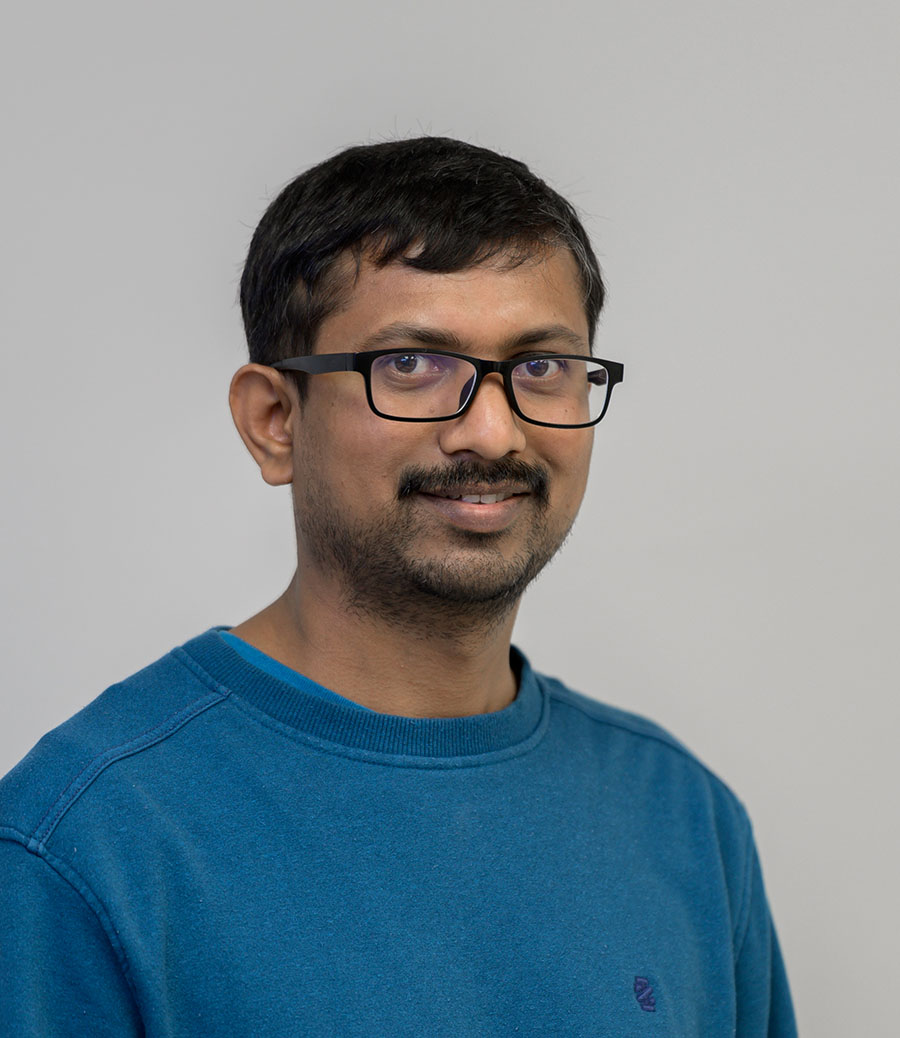
Govind Kunduri, Ph.D.
- Center for Cancer Research
- National Cancer Institute
- Building 560, Room 22-3
- Frederick, MD 21702
- 301-846-6677
- kunduri.govind@nih.gov
RESEARCH SUMMARY
Dr. Kunduri’s research is focused on phospholipid and sphingolipid metabolism in development and disease. In particular, he applies Drosophila genetics, advanced imaging, and biochemical techniques to dissect physiological and pathophysiological functions of ceramide phosphoethanolamine (CPE), a structural analogue of sphingomyelin in Drosophila. His work on CPE has shed lights on neuron-glia interactions in photosensitive epilepsy and endocytic membrane traffic in male meiosis cytokinesis.
Areas of Expertise

Govind Kunduri, Ph.D.
Research
I am interested in understanding how sphingolipids regulate plasma membrane expansion and endocytic membrane traffic. My research has focused on a major sphingolipid ceramide phosphoethanolamine (CPE), a structural analogue of sphingomyelin in Drosophila. Sphingomyelin is highly enriched in the myelin sheaths that surround the axons of nerve cells. We have shown that genetic ablation of ceramide phosphoethanolamine synthase (CPES), an enzyme responsible for biosynthesis of CPE, resulted in development of photosensitive epilepsy (PSE) in Drosophila. Through a detailed genetic and biochemical characterization of cpes mutants, we have demonstrated that CPE is a crucial structural component of glial membranes and that disruption of CPES activity severely compromises the integrity of the cortex glial plasma membranes. This, in turn, affects vital interactions between glia cells and neurons, resulting in light-inducible seizures. Seizures induced by visual stimulation represent a common type of epilepsy in humans, but the underlying molecular mechanisms and genetic drivers have sofar remained largely obscure due to a lack of suitable animal models. Using Drosophila mutants of cpes as a model, we are currently conducting genome wide RNAi screening experiments to identify novel genes that regulate photosensitive epilepsy. We believe that these studies will expand our knowledge about the mechanisms responsible for photosensitive epilepsy in humans and further help in efforts to develop novel therapeutics.
In addition to glial cells in the nervous system, CPE is also enriched in the spermatocytes of testis. However, unlike in the nervous system, we have shown that acyl chain composition of CPE is more unsaturated in the spermatocytes. cpes mutant males are sterile and show defects in male meiotic cytokinesis. Live cell imaging of spermatocytes treated with the CPE specific biosensor pleurotolysin A2 (PlyA2), we have shown that CPE is actively endocytosed and targeted to cleavage furrow via Rab7 positive multivesicular endosomes (MVEs). We found that Rab11 is required for cleavage furrow specific targeting of CPE and Rab7 positive endosomes. Using high resolution correlative light and focused ion beam scanning electron microscopy (FIB-SEM) and correlative light and transmission electron microscopy we showed that MVEs densely packed with intraluminal vesicles (ILVs) docked on cleavage furrow. Further, strikingly we found that the outer limiting membranes of these MVEs are ruptured and released their ILVs in the vicinity of cytokinetic furrow, suggesting delivery of specific lipids to growing plasma membrane at the furrow during male meiotic cytokinesis. Unlike the conventional MVEs that release their ILVs outside the cells as exosomes, we have discovered a novel type of MVEs that release their ILVs in the cytosol to deliver lipids for membrane expansion at the cytokinetic furrow. Currently, we are further investigating biochemical properties and dynamics of these unique MVEs in male meiotic and other cell types. We hope these studies will shed lights on novel intracellular membrane delivery mechanisms that are conserved across the species.
Biography

Govind Kunduri, Ph.D.
Govind Kunduri received his Ph D. in Biochemistry in 2012 from the Indian Institute of Science, Bangalore, India, under the supervision of Professor Savithri S Handanahalli. His graduate study was focused on understanding replication mechanisms in a plant single stranded positive sense RNA virus. Subsequently, he joined Dr. Jairaj Acharya’s group in 2012 as a visiting fellow, became a Research Fellow in 2018, and then a Staff Scientist in 2022. Dr. Kunduri’s research in Acharya’s lab centered around phospholipid and sphingolipid metabolism in development and disease.
Publications
- Bibliography Link
- My Bibliography (NCBI)
- ORCID
- Google Scholar
